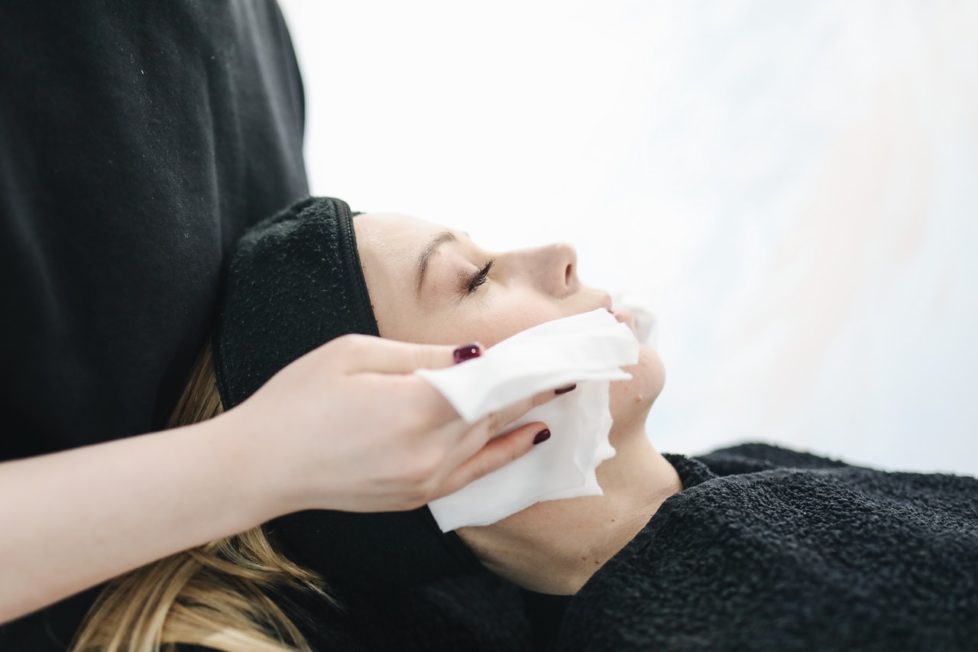How Effective are Salicylic Acid Peels for Acne Prone Skin?


Many might not know what salicylic acid actually is. salicylic acid is a crystalline, colorless acidic substance that has anti-inflammatory properties. It isn’t harmful at all and is actually found in a lot of fruits like blueberries, blackberries, grapes, and apricots.
Salicylic acid peels are chemical peels that are designed to ensure that rough skin transforms into smooth and soft skin. It is one of the most effective ways to treat acne.
Apart from acne, salicylic acid peels can be used to treat other skin conditions like skin discoloration, aging, melasma, freckles, etc. So the question is
If salicylic acid is applied topically then:
Unclogs pores: It helps in softening up the skin, unclogging pores and exfoliating dead skin cells to prevent acne breakouts. This deep skin exfoliating and cleansing helps in preventing acne from spreading.
Anti-inflammatory: Salicylic acid also has anti-inflammatory properties which reduces the inflammation and redness associated with acne. But it’s better to use low concentration salicylic acid to get better anti-inflammatory effects.
Comedolytic effect: Salicylic acid removes the build-up oils and dead skin cells which result in acne and blemishes.
Desmolytic effect: Desmolytic effect means that salicylic acid can exfoliate skin cells by disrupting the intercellular connections. This prevents acne from spreading.
Salicylic acid peels are very mild peels so there are not too many side effects. But depending on the sensitivity level of your skin you can experience redness.
Redness is a very common side effect of using salicylic acid peels but it generally doesn’t last long. You might also experience increased sun sensitivity as well as a little tingling sensation. But all of it should go away a little while after using the peel.


Salicylic acid works best on blackheads, whiteheads, and pustules since one of its major function are to unclog pores. But you can use it on cystic acne as well since its inflammatory and anti-bacterial properties can help in reducing its development.
Strong acid: If you are getting salicylic acid peels from a cosmetic manufacturer then you will get peels that aren’t very strong. If that isn’t enough for your use then you can use stronger peels which are 20 to 30 percent salicylic acid. Yet it’s advisable that these are best applied in the doctor’s office.
Timing: It’s always better to go to a doctor because the peels have to be left on the skin for some amount of time. This time differs according to the color and skin type of person. This also determines the kind of skincare which a person has to undertake.
Burning skin: It’s better to consult your dermatologist before putting on any kind of made at home or try-at-home salicylic acid peels. This is because you could unintentionally burn up your skin.
Step -1: First, clean your skin using a gentle cleanser and then slowly pat it dry.
Get a cotton swab and then soak it into rubbing alcohol. Apply this gently all over your face. You can put the peel right away on your skin but this step will allow the acid peel to work better.
Step -2: Use the peel and put it on your skin. If you are having trouble applying it on your skin then know that some peels come with an applicator to fully distribute it. When using the salicylic acid peel, make sure to avoid the eye and other sensitive areas of your skin. If you don’t have an applicator then use a gauze pad to spread the peel around fully. Also, put on gloves while using the peel.
Step -3: Let the peel rest and do its job for the recommended time limit. You might think that leaving the peel on for more amount of time means that it will work better. But that’s not the case at all. Instead, you can experience skin irritation if the peel is left for too long. More isn’t always better in this case.
Step -4: After removing the peel, use warm water or a neutralizing solution to wash your face. Make sure that the solution reaches all the parts and areas of your face. This thoroughness is important so that the peel gets neutralized fully.
Now use a soft cloth to wipe your face. Your face might feel hot after this. So use cold water until you feel normal.
Step -5: Apply a good moisturizer that is compatible with your skin. During the period of using the peel (or at least for a week), make sure to be gentle on your skin and stay away from any kind of exfoliating procedure. You should also avoid exposing yourself to the sun and if you have to go out then make sure to use sunblock and a hat.
For this treatment to be effective, salicylic acid has to be used continuously. There’s something very important which you need to keep in mind regarding salicylic acid- it benefits stop when you stop using it.
So once you stop using it your acne will return. But this isn’t always the case. So it’s always advisable that you consult a dermatologist before going forward with salicylic acid peels. This consultation will ensure that the procedure is more effective for you.
